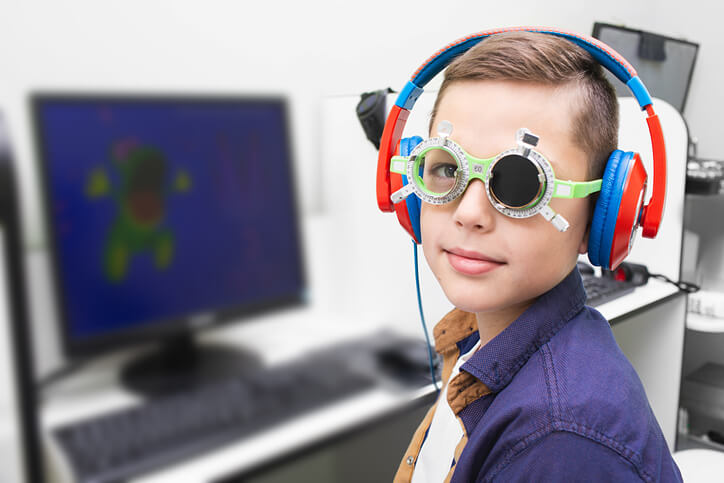Parent’s Guide to Amblyopia in Kids

The best results for correcting amblyopia in kids is to catch it before the age of seven. This is also why regular eye exams are so important.
Amblyopia is the technical term for a condition that most parents know as “lazy eye.” This condition is one of the most common eye problems, with amblyopia in kids affecting nearly one out of every hundred children. As a parent, you might not understand what lazy eye is, how it affects kids, why it happens, or what you can do about it. Here are some of the things that you might need to know!
What Causes Amblyopia in Kids?
Lazy eye is a condition in which the usable visual signal coming from one eye doesn’t stimulate the brain properly. The brain can then start to favor the other eye. Amblyopia in kids can be caused by a single factor or a blend of factors, including a wide variety of eye problems.
In many cases, a muscle imbalance is the main culprit. This imbalance can cause the eyes to become crossed or turn outwards. Without being able to look in the same direction, the eyes can’t work together and one becomes favored.
There could also be a problem with the lens of one eye. A child with glasses might have a greater degree of farsightedness or nearsightedness in one eye. In these cases, vision is still blurred in one eye, even when using glasses.
How to Tell Whether Your Child Has Amblyopia
One of the most difficult aspects of treatment for amblyopia is recognizing its presence in children. Because they may not know the difference between normal vision and their own personal experience, children might have a hard time verbalizing their struggle. This is true when children need glasses and when dealing with amblyopia in kids.
Regular eye exams are one of the best ways that you can catch any optical health problems early on, but there are also some signs that you can look for as a parent to identify amblyopia in kids.
One of the most common ways that lazy eye is identified is through poor performance in math or reading at school. The inability to focus the eyes properly can hinder learning. That is why eye health is one of the first areas that should be investigated when young children begin to struggle at school.
At home, watch to see if your child is turning their head to the side in order to see something better. This is easiest to observe when they’re watching television and are sitting relatively still, but you can also see it when they’re performing hand-eye coordination tasks like playing sports.
Amblyopia Treatment for Kids
Fortunately, treatments for amblyopia in kids are very effective. It’s even better if treatment begins before the age of seven. There are a number of different routes that your optometrist could recommend based on your child’s unique needs.
Eye patches are among the most common treatments. Using this approach, the child will wear the patch over the stronger eye. This allows the weaker eye a chance to develop greater strength. Usually, kids will have to wear a patch for two to six hours each day. In most cases, this is for several weeks or potentially several months. However, more serious cases could require treatment of up to two years.
There are a number of alternatives available today, as well. These include special lenses to account for underlying issues. For this, one lens has a filter that partially obscures vision in the stronger eye. Or absolutely necessary, surgery, but only in very serious cases.
Concerned for Your Child’s Eye Health?
If you believe your child is suffering from amblyopia or you’d like to establish a regular routine for vision care, book an appointment with Looking Glass Optical today.
Share
